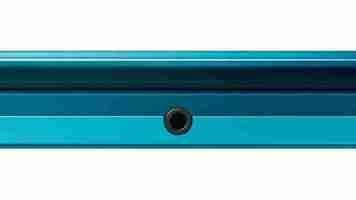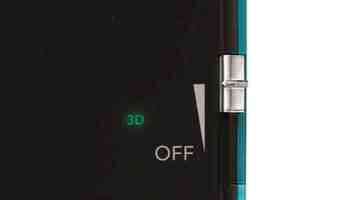Nintendo 3DS Nintendo 3DS review
We've been holding off giving our opinion on Nintendo's much-hyped 3D handheld, largely because we were waiting for some actual games to play on, which turned up just yesterday - a couple of weeks after the hardware. Here, you can read our impressions of the Ubisoft 3DS lineup . The good thing about the wait, is that it's given us lots of time to consider this intriguing device and its many capabilities.
The original DS came out in 2005 in the UK and was then followed by the slimmer DS Lite, the fancier DSi and the larger DSi XL. Despite their differences all these consoles had the same core hardware and ran the same games. Between the various iterations Nintendo has sold around 145 million units - making it one of the most popular games consoles ever. The 3DS is the first true successor to the DS range, completely reworked with a new processor, graphics chip, control layout and, of course, that much-publicised 3D display.

Our initial impressions of the 3DS were much along the lines of the original DS. The hardware itself is rather ungainly, formed of three different layers, which on our review sample are exaggerated using varying shades of blue. The 3DS doesn't possess the smooth continuous exterior so beloved of, say, Apple's gadgets - but instead has a rather higgledy-piggledy appearance. It isn't that small either, measuring 21x134x74mm, around the same size as its DSi predecessor. This isn't surprising given the insane amount of buttons and gadgets that Nintendo have stuffed into the casing. So let's breakdown what's here.
3DS SCREENS
The Nintendo DS was always defined primarily by its twin screens and the lower display's touch screen interface, but now both screens have a neat trick. The 3D display at the top has generated a lot of fuss, overshadowing the rest of the hardware. It's certainly impressive if you haven't seen a glasses-free 3D display before using parallax barrier technology - such as the Fujifilm FinePix Real 3D W3 . It takes a few seconds for your eyes to focus properly the first time, but then everything springs into 3D.
Its 3.5in across and has 800x240 pixels, that's 400x240 pixels per eye - far more than the 256x192 pixels used in the DSi screens. In terms of graphical prowess, it's far too early to make a proper judgement based on the games we've seen - but so far we'd describe its polygon pushing power as capable rather than mind-blowing.

There's a slider on the side if the display that supposedly controls how 3D the display is, but we found that you might as well have it turned all the way up. This gives the best depth effect and we didn't find that moderating the 3D made a big difference to how tired our eyes felt. Speaking of this, it makes a big different depending on what kind of game you're playing. Anything that requires long periods staring intently at the screen quickly tired out the muscles around our eyes - so driving games were challenging, while anything that made us switch back and forth between the two screens was far easier. It may be that over the weeks our eyes will get used to the display, but it's too early to say for sure.
One thing we will have to change about our game playing style is the amount of unintentional hand waving that goes on. Whether its steering a car or making jumps in a platformer, we usually find ourselves trying to get a little extra by pointlessly waving the console around as we play. However, the screen has a relatively small tolerance for such things, before the 3D effect becomes simply a blur, so we'll need to learn to sit still when we play.
The 3D display only provides the merest hint of things protruding from it, and it's a good thing too as on such a tiny screen the illusion would soon be shattered unless the object was coming straight at you. Instead, it's mainly set to provide a palpable sense of depth into the game. This effect makes the screen feel far bigger and more immersive than it would otherwise, like a little virtual world is actually inside your DS, instead of just being simulated by it. In short it's a lot more magical than Apple's iPad ever will be.
The touchscreen is largely unchanged from previous models. Disappointingly it's still a resistive design, rather than the capacitative touchscreens we're used to on smartphones. This means you need to give it a definite poke to get it to react. Around the back of the DS is a slot with a small two-part telescopic stylus, very handy for precise inputs on that resistive touchscreen. On the plus side, the new touchscreen is more detailed than the DSi touch screen, with a resolution of 320x240 pixels.